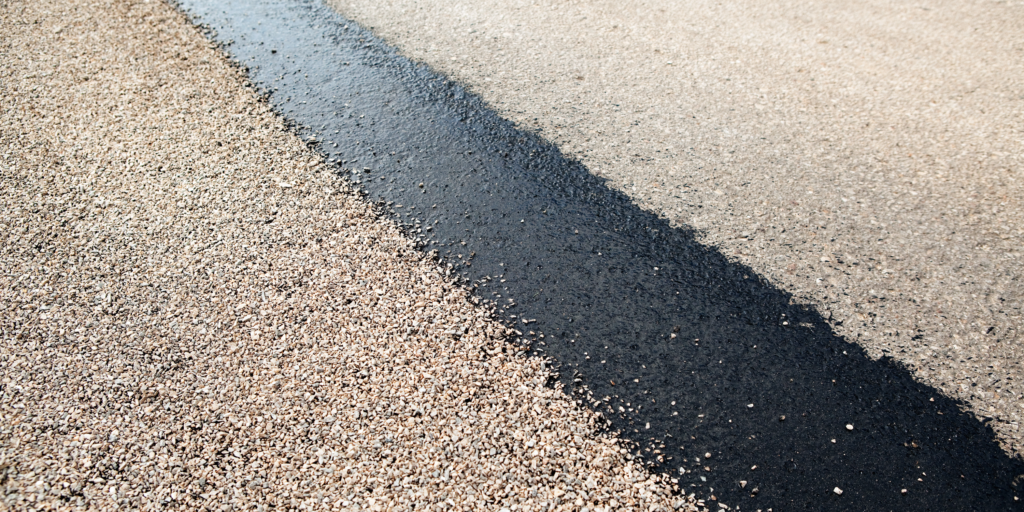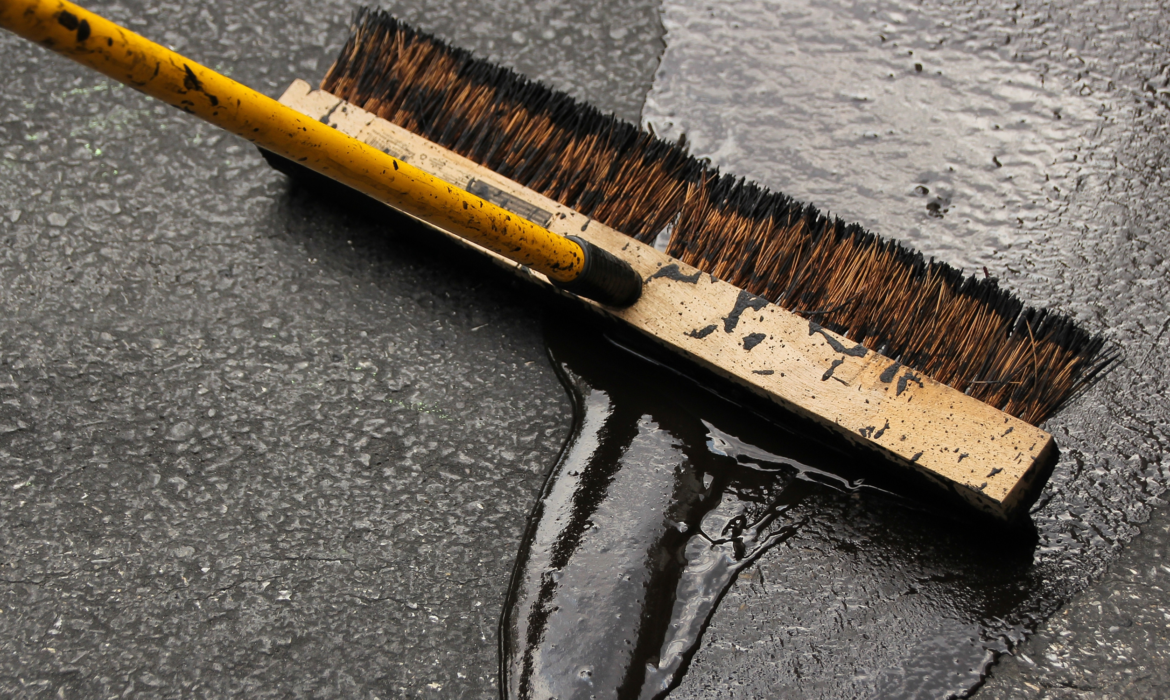Are you sick of cracks and potholes in your asphalt driveway or parking lot? Looking to restore its smooth, immaculate appearance? Stop looking! Find out how asphalt sealing and paving differ. These characteristics will help you choose the best alternative for your needs.
Understanding sealing vs. paving
Asphalt upkeep requires understanding the differences between sealing and paving. Both methods extend asphalt surface life, although they have different goals.
Sealing protects asphalt by adding a thin coating of sealer. This sealer prevents UV radiation, water damage, and oil spills. Prevention of cracks and longer-lasting asphalt appearance.
Paving, on the other hand, includes adding a fresh layer of asphalt. This method is done when the pavement is beyond repair or significantly damaged. Paving restores attractiveness and strengthens the road for heavy traffic.
Sealing costs less than paving, but it needs more reapplications. With careful care, paving can last for years.
Budget, damage, and property goals determine whether to seal or pave. Consulting a competent contractor can help you make a customized decision.
Understanding these differences will help you maintain your driveway or parking lot properly!
Sealing asphalt
Your driveway or parking lot needs asphalt sealing to last. An applied sealer protects the surface from UV radiation, water infiltration, and daily wear and tear.
Clean the asphalt before sealing. Brushing or pressure washing loose debris is normal. Cracks should be filled with a suitable filler after cleaning and drying.
Next, squeeze or spray a high-quality asphalt sealer uniformly throughout the surface. The sealer needs at least 24 hours without vehicle traffic to cure and bond with asphalt.

Sealing asphalt has many advantages. It prevents moisture from causing cracking and degradation. It also prevents sunlight-induced oxidation and UV fading.
Maintenance through sealing can increase the life of your asphalt surface and improve its appearance. Sealing does not fix deep potholes or substantial cracking, which may require rebuilding or repaving.
Learn about asphalt sealing and its benefits for driveway or parking lot longevity to make informed judgments about when to invest in this crucial maintenance operation.
Advantages of sealing asphalt driveways or parking lots
Sealing your asphalt driveway or parking lot has many benefits, including adding longevity and beauty. Rain, snow, and UV protection are major benefits. A sealer prevents water from penetrating pavement and generating cracks and potholes.
Sealing additionally prevents sunlight-induced oxidation. This can deteriorate asphalt over time. Regular sealant application preserves pavement color and integrity.
Sealing also improves property appearance. Newly sealed black tops are clean and shining. It enhances curb attractiveness and impresses customers.
Sealing also protects asphalt from oil spills, gasoline leaks, and other contaminants. These elements cannot penetrate the pavement structure through the sealant.
Regular driveway or parking lot sealing minimizes upkeep. Sealed pavements are easier to clean because dirt sticks less.
When to seal asphalt?
Sealing your asphalt driveway or parking lot is a common question. Several factors determine the answer.
Asphalt age comes first. Sealing may not be needed for new pavement. As the asphalt fractures or fades, sealing becomes increasingly necessary.
Your climate is another consideration. Temperature fluctuations can harm asphalt over time if you live in a harsh winter or hot summer. For weather-related difficulties, seal.
Sealing oil stains and other chemical spills on pavement can also prevent additional harm. These chemicals can permeate asphalt and degrade it without protection.
Maintenance is key to determining whether to seal asphalt. Crack detection and repair can extend pavement life. Seal cracks before they worsen to prevent water intrusion and freeze-thaw damage.
Your asphalt’s age, environment, and care will determine if it needs sealing. Keep an eye out for wear on your pavement and consult a competent contractor to make an informed timing decision.
Paving asphalt
Paving asphalt requires numerous procedures to create a smooth, lasting surface. Eliminating rubbish and vegetation prepares pavement or soil. Next, grade and condense the area for stability.
A gravel or aggregate base course follows. Stability and drainage are improved. Once the base course is laid, hot asphalt mix is brought in and spread evenly.
Rollers are then used to compact the asphalt to the right density. Compaction assures that the pavement will survive high traffic without breaking or degrading.
Additional asphalt layers may be added based on project needs. After all layers are laid and compacted, parking spots and traffic lanes can be marked.
To produce a durable, high-quality asphalt paving product, rigorous planning, execution, and attention to detail are needed.
Paving over sealing benefits
You may wonder whether to seal or pave your asphalt driveway or parking lot. Paving has advantages over sealing (but both have benefits).
First, paving lasts longer than sealing. Asphalt paving is like creating a new surface that can survive heavy traffic and the elements for years. Future repairs and maintenance will be lower.
The paving also improves the property’s look. Clean, freshly paved driveways and parking lots offer curb appeal. If you’re selling your home, this makes a good first impression.
The paving also increases design freedom. Pavement can be customized to complement your property’s design or include decorative patterns or borders with various colors and finishes.
Due to their levelness and lack of cracks or potholes, paved surfaces are smoother than sealed ones. This reduces uneven terrain accidents for automobiles and pedestrians.
Sealing asphalt protects it from future deterioration, but it does not fix structural problems or base failures. These issues can be addressed during paving installation to avoid recurrence.
When deciding between sealing and paving, consider
Sealing or paving your asphalt driveway or parking lot depends on various things. Assess the asphalt’s condition first. Does it have small cracks and wear or need major repairs? If damage is limited, sealing may be a cost-effective way to extend asphalt life.
Traffic is another consideration for your asphalt surface. If delivery trucks or construction equipment drive over it, paving may be better. Paving is more robust and can tolerate heavy use without eroding.

Budget and long-term maintenance should also be considered. Although sealing is cheaper than pavement, it may need more regular reapplication. Paving costs more but requires less maintenance over time.
Your selection may be influenced by aesthetics. Sealing gives aged asphalt a shiny black gloss. If aesthetics are important or you want decorative colors or patterns, pavement is more flexible.
Conclusion
Knowing the difference between asphalt sealing and asphalt paving will help you choose for your driveway or parking lot.
Sealing asphalt improves its durability and attractiveness. It prevents weather, UV, and daily wear damage. Restoring surface color and texture with sealing gives it a fresh look.
However, asphalt paving involves adding a fresh layer of asphalt to a prepared base. For places with substantial damage or no pavement, this technique is perfect. Paving is tough, smooth, and can handle heavy traffic.
Many considerations should be addressed when determining whether to seal or pave asphalt. Pavement condition, funding, long-term maintenance goals, and area use are among them.
Maintaining pavement with sealing every 2–3 years extends its lifespan. However, total paving may be better if your driveway or parking lot has major cracks or potholes.

